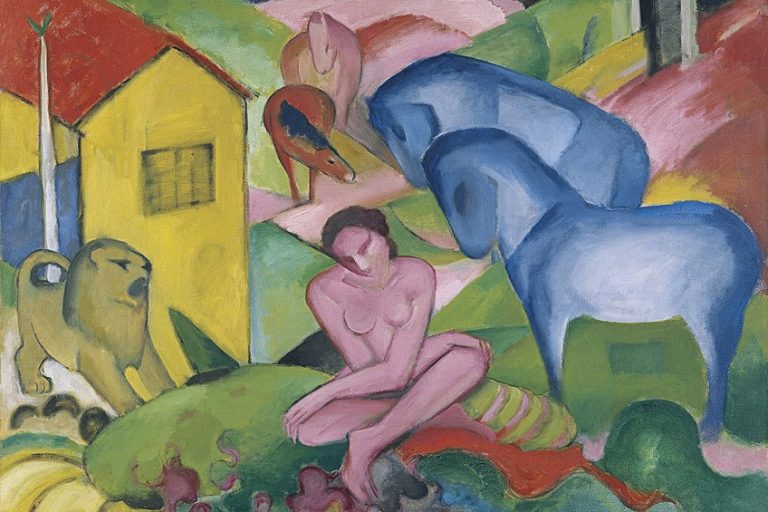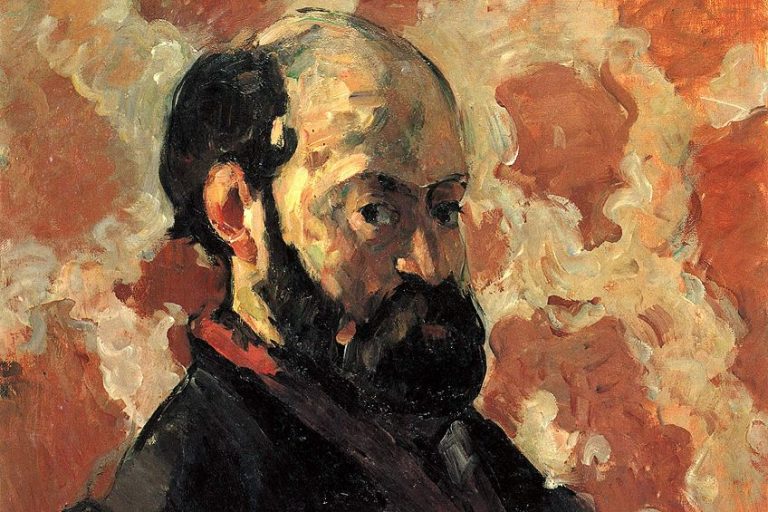Peter Paul Rubens – A Rubenesque Artist’s Biography
In the 17th century, a new kind of artist was emerging that embodied a professional and gentlemanly attitude towards work and life, and Peter Paul Rubens was one of them. Rubens’ art was a masterful blend of Italian Renaissance traditions and Flemish Realism, which resulted in an ebullient style that was full of drama, color, and movement. Peter Paul Rubens’ distinct voluptuous depictions of the female form were very influential on subsequent artists, and even today the term Rubenesque is used to describe curvaceous forms. Let us take a look at Peter Paul Rubens’ biography to find out more about the artist and answer any potential questions you might have such as “What nationality was Peter Paul Rubens?”
Table of Contents
Peter Paul Rubens’ Biography
| Nationality | Flemish |
| Date of Birth | 28 June 1577 |
| Date of Death | 30 May 1640 |
| Place of Birth | Siegen, Westphalia |
| Movement | Baroque |
Peter Paul Rubens is most well-known for his energetic paintings that portray subjects from Christian and classical history. Rubens’ landscapes, altarpieces, and portraits of mythological and scriptural subject matter provide the modern viewer with insight into the cultural and historical environment in which the artist lived and worked.
Rubens was said to be a man that moved easily between both political and artistic circles, and an exemplar of a productive and courtly artist that was able to lift the standards of his own life to match those of the wealthy patrons he was commissioned by.
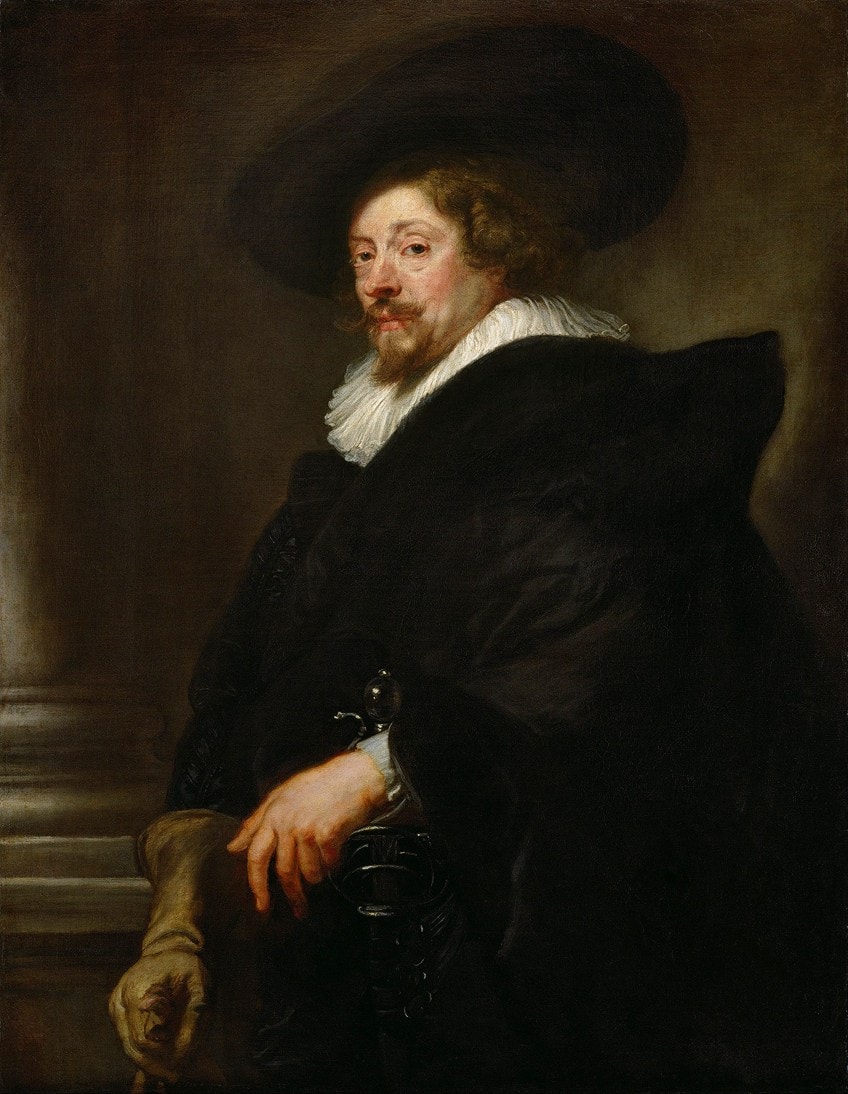
Childhood and Education
Peter Paul Rubens was born in Antwerp, which at that time was a bustling seaport city regarded as the most affluent in Europe. His father was involved in politics and his mother was a writer and heiress from Southern Netherlands. He was raised Roman Catholic and schooled according to humanist principles. From a young age, his father had encouraged the boys to embrace education and Rubens excelled at school during his years studying in Cologne. His courtly life started when he served as a messenger boy for a widowed noblewoman.
From that start, the young Rubens would have preferred to be an artist, but his family felt that due to his diplomatic predisposition, serving as a messenger would be the ideal fit.
He would draw in his spare time though, and his sketches from this period showcase his growing love for the finer things that life had to offer, such as luscious landscapes, beautiful women, people dancing, and the lives of gods and goddesses. His time spent as a courtly messenger would not go to waste, as during this time he was exposed to the necessary protocols of etiquette and interaction that would prove invaluable when he was required to associate with royalty and wealthy patrons later in his career.
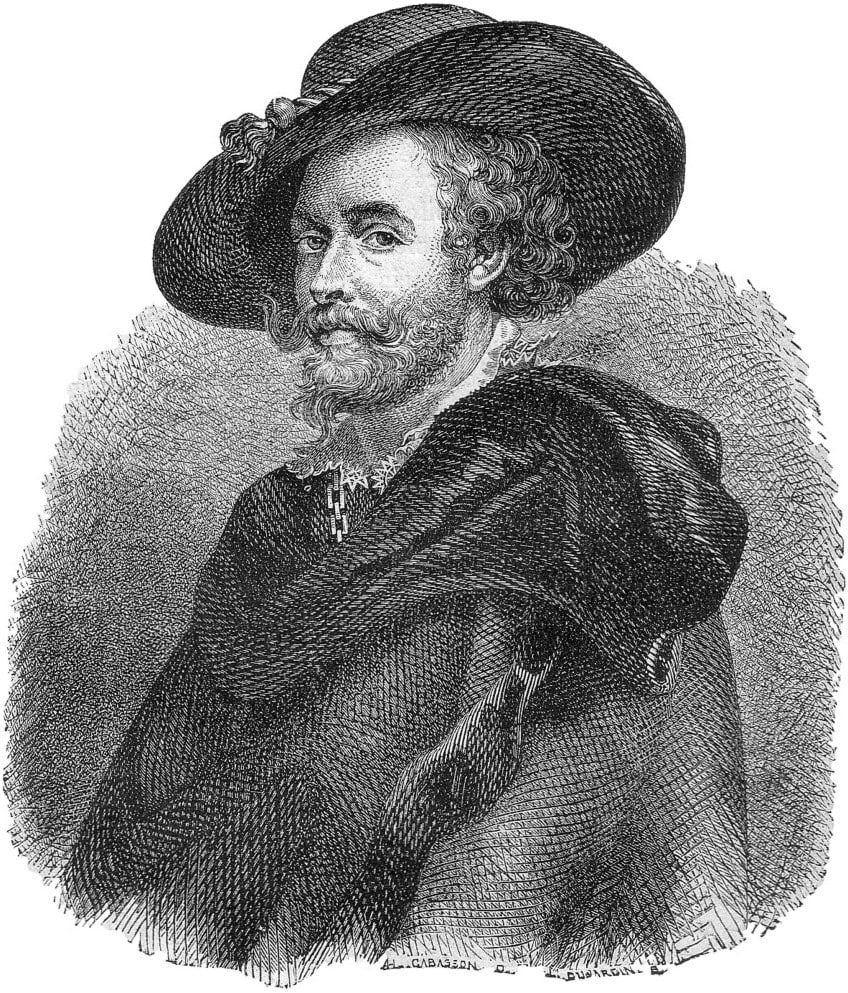
Portrait of Peter Paul Rubens (c. 1840-1859) by Louis Dujardin; Louis Dujardin (1808-1859), after A. Harang Cabasson (1814-1884), after Peter Paul Rubens, Public domain, via Wikimedia Commons
Early Period
When Rubens was 13 years of age, his father passed away, and both he and his brother had to take on more work in order to financially support the rest of the family. Rubens became the apprentice of Tobias Verhaeghe in 1591 when he was 14 years of age. Verhaeghe was a distant relative of the family and regarded as an uncelebrated artist who created uninspiring landscapes.
A year later, he started to work in the workshop of the much more talented artists Adam van Noort, a master figure painter that was greatly admired and respected by the students.
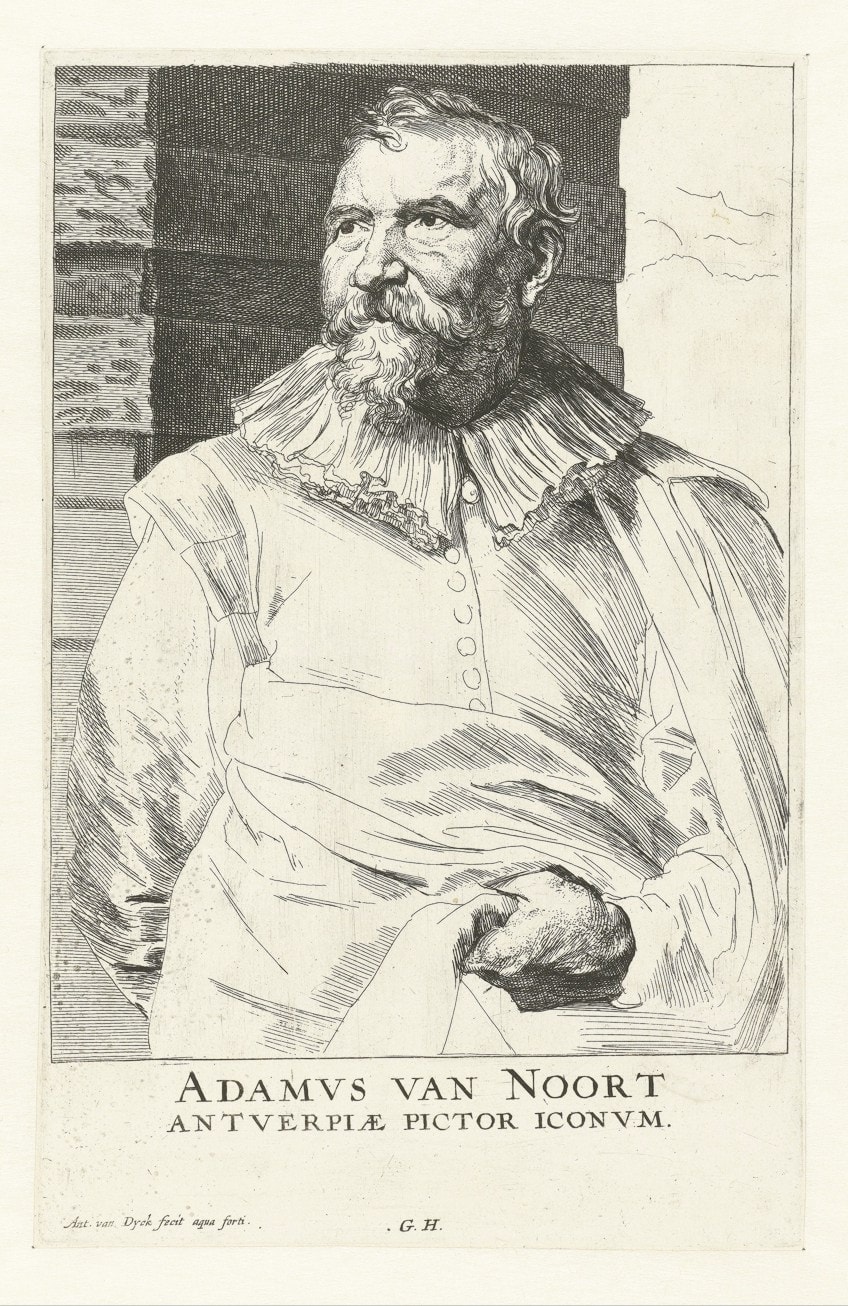
After four years at van Noort’s workshop, he became the senior apprentice to Antwerp’s most renowned history painter, Otto van Veen. Rubens was only 21 years old when the Guild honored him with the status of an independent master artist. By the age of 24, he became a franc-maitre of the Guild, which meant that he could take on apprentices and sell his works to the public.
The Guild comprised ceramicists, artists, goldsmiths, printers, and many other artisans and craftsmen who all shared their contacts with each other.
Peter Paul Rubens then traveled to Venice in 1600 to see the works of Veronese, Titian, and Tintoterro with his own eyes. Rubens was instantly captivated by the vivid hues and compositions, which were full of drama and life. While there, he was introduced to the Duke of Mantua by a man that had been impressed by the young artist’s self-discipline and sober habits upon meeting him.
The duke appointed Rubens as his court painter, who was then sent to study classical art in Spain and Rome with the Duke’s financial support. While there he copied the works of Raphael, da Vinci, Michelangelo, and Caravaggio, as well as created his own masterpieces. He also suggested which art pieces the duke should buy and ran diplomatic errands until 1604 when he once again returned to Italy.
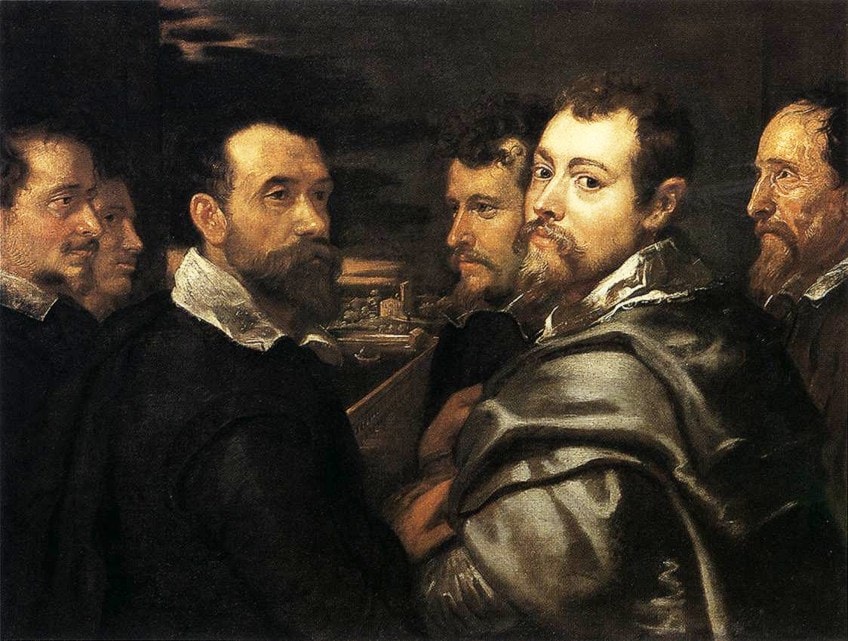
Mature Period
Rubens and his brother were making decent money at this point, renting an apartment that came with studio space, hiring a few servants, and regularly inviting guests around to talk about art. He then traveled to Rome a second time, further exploring the works of the Renaissance masters as well as the ancient sculptures of Greece and Rome. He felt that an in-depth study of the classical figures was necessary to grasp an understanding of the human figure, but that painters should apply what they learn selectively, avoiding the feeling of stone in their paintings.
During this time, Peter Paul Rubens produced many portrait paintings that would subsequently influence painters such as Joshua Reynolds, Anthony van Dyck, and Thomas Gainsborough.
Upon hearing that his mother was gravely sick, Rubens left Rome in 1608 and returned to Antwerp. Unfortunately, she had already passed by the time he had returned, but he decided to stay and became the Archduke’s new court painter in 1609. Shortly after, Rubens met and fell in love with the 18-year-old Isabella Brant, his sister-in-law’s niece. While a house was being constructed for the couple, they stayed with her family, and eventually moved into their home after it was completed in 1615. The Italian Villa-styled residence was situated in the middle of Antwerp and contained his studio as well as his library and art collection, both of which were regarded as the largest in the city.

Peter Paul Rubens, Public domain, via Wikimedia Commons
The new workshop space could facilitate numerous assistants and students, such as one artist who was on his way to becoming the most prominent Flemish portrait artist, Anthony van Dyck. Rubens regularly collaborated with artists that specialized in specific aspects of painting, such as Frans Snyders, an animal painter who created the eagle in Rubens’ masterpiece, Prometheus Bound (c. 1611-1612). The studio would produce huge quantities of altarpieces for various Roman Catholic churches in the years between 1610 and 1620.
The artist combined the realism of Flemish art with Michelangelo’s power and employed color in the manner of Titian.

Many artworks were also created by the workshop that portrayed non-religious themes such as historical, mythological, and allegorical scenes, as well as scenes of everyday life such as hunting scenes, landscapes, and portraits. Rubens would paint the most important individuals and details of the artwork himself.
A visitor who watched the process and wrote about it noted that several artists would work on a painting at once, adding color to a preliminary chalk sketch that Rubens had created.
The sketch would contain the positions of the figures with little bits of color added here and there, which were then fully painted in by the apprentices. Once they had completed the coloring process, Rubens would complete the work by adding the details. These were all considered to be works of Ruben, and he was able to produce large quantities to meet the demand for his art from royalty and the elite.
Towards the end of the 1620s, his knack for diplomacy was put to full use, as he traveled between the royal courts of Spain and England to try and engage the two countries in a peace treaty. On a more personal level, Rubens used the opportunity to get a change of scenery after his wife passed away in 1626.
Being in the same environment kept bringing him back to his sorrow, so he left in order to immerse himself in a different environment where he would have nothing to remind him of his loss.
Despite all of his efforts, though, these attempts at a diplomatic solution did not and up as hoped, but his work did not go unnoticed and Rubens was knighted by both the Kings of Spain and England. While in England, Rubens resumed his study of Titian’s artworks, apparently copying every one of his paintings that King Philip had in his collection.

Late Period and Death
Rubens spent the last 10 years of his life only producing artworks that interested him, selectively choosing commissions that allowed him to do so. He married his deceased wife’s niece in 1630 when he was 53 years old and used the 16-year-old as the model in several of his works. Over the next decade, the two had five children together and the artist kept producing despite suffering from arthritis and gout.
He bought a house out in the country in 1635 where he created landscape scenes of humans living in perfect harmony with their surroundings. After passing away in May 1640, he was buried at Antwerp’s Jocobskerk.

Legacy and Accomplishments
Peter Paul Ruben’s unique style would greatly influence artists for the next 300 years from his student van Dyck through to Renoir. His influence can be seen in the works of artists from across the world, such as Luca Giordano and Pietro da Cortona in Italy, as well as Sir Joshua Reynolds and Thomas Gainsborough in England. Even Eugène Delacroix would praise Rubens’ style in the 19th century, stating that very few artists had reached the same level as Rubens, who was capable of overpowering the viewer with his boldness and liberty.
Peter Paul Rubens helped establish the idea of a productive workshop among artists, as his Antwerp studio was always buzzing with activity with the production of works that were of high quality and in high demand among European art collectors and nobility.
The was consistently able to push out large quantities of work by employing many assistants. He was not only a prolific artist, but because of his affable attitude, he was also a respected diplomat who could go between courts and assist in conflict resolutions. During this period, art was constantly under scrutiny by the leaders of various Christian churches to make sure that artists abided by the restrictions placed on them regarding the subject matter of their paintings. However, due to his pleasant demeanor, it is believed that Rubens was afforded certain creative liberties that were not given to other artists.
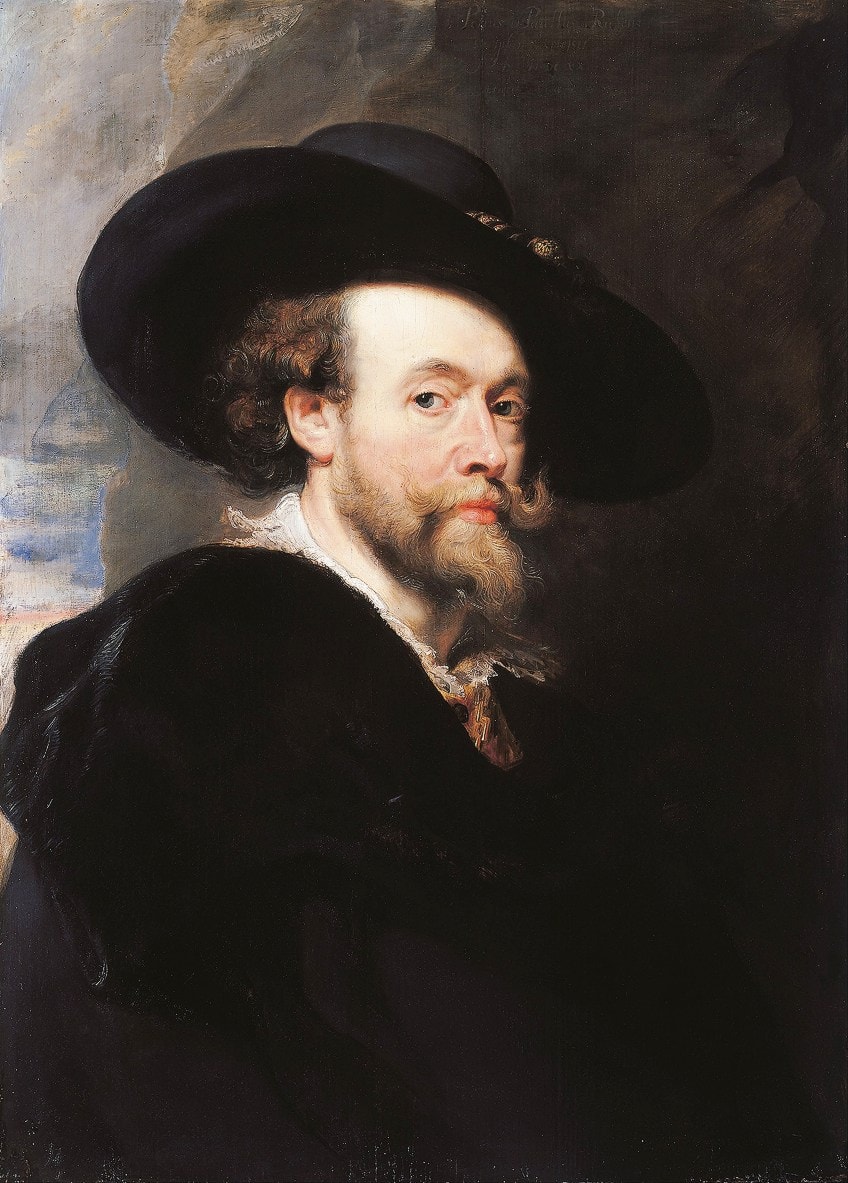
Peter Paul Rubens’ Art Style
Rubens is most well-known for his religious and mythological artworks that often featured naked people. He produced his art in the Baroque style, portraying women as rather passive and soft-bodied creatures who seem highly sexualized to contemporary audiences. These nudes highlighted the notions of desires, temptation, virtue, and beauty. Although nudes had been employed in the arts for many centuries to depict idealized beauty, for modern feminists it represents the age-old representation of the male gaze, specifically created to appease the predominantly male patronage he enjoyed throughout his career.
The artist loved to portray full-bodied curvaceous figures which gave rise to the term “Rubenesque”.
Many of his works feature significant female archetypes such as the regent, virgin, wife, and widow. By portraying these archetypes along with depicting other important female figures of his time, he helped to elevate the perception of women from being mere models to individuals who were recognized on an equal footing with their male counterparts.
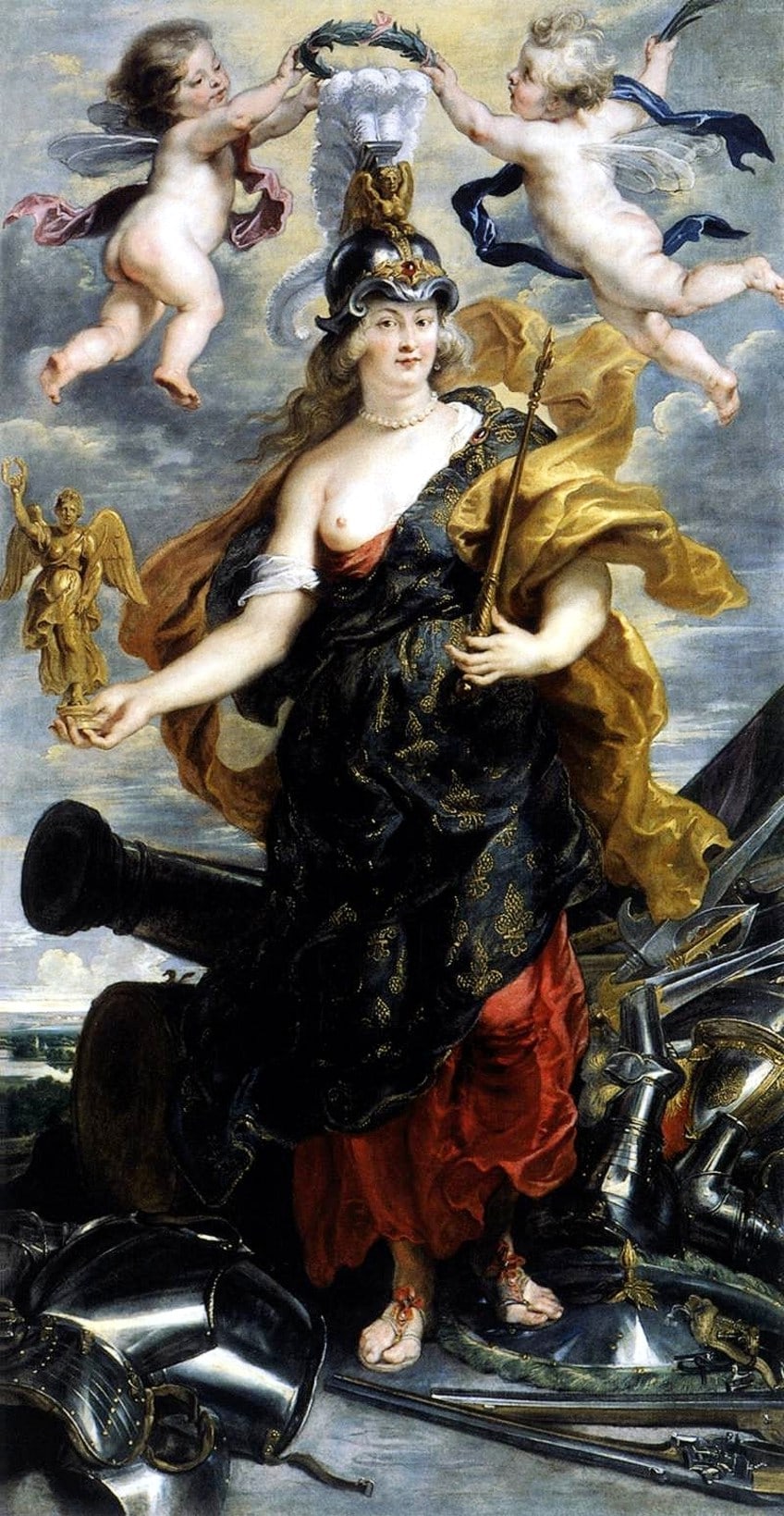
Ruben’s males were depicted as mythical or biblical men with athletic physiques, mostly naked, except for a sash or weapon that would strategically be placed so as not to render the figure completely exposed. As opposed to the passive poses of his female figures, the males would always be engaged in some sort of physical excretion as they twist, bend, and contort in all manners of positions in order for Rubens to create a sense of drama and movement.
The males in his works were representative of the powerful and compelling aspects of mankind, using subjects and symbols that referenced authority, war, triumph, and athletic prowess. The king, the warrior, the father, and the husband were all masculine archetypes found in his works.

He often created religiously-themed works which had been commissioned by various churches or patrons who wished to convey their devotion. In order to elevate his subjects to an exalted state of splendor, he would utilize the iconography and style of classic Italian artworks.
He also produced works based on the mythology of the Greco-Roman era, rendering them in a stylish manner that contained an underlying sensuality. By portraying gods and deities, he was able to be more stylistically free with his depiction of the human form, and the mythological themes allowed him to paint the figures in highly exaggerated positions and dramatic scenarios.
Rubens loved depicting textures such as fur and created hunting scenes where he could portray wild animals and beautiful scenery.
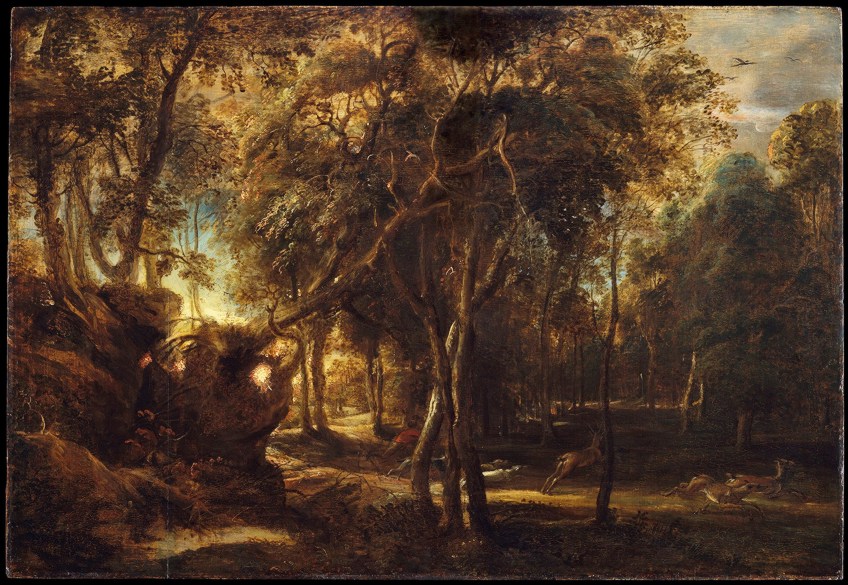
He was also a prolific painter of portraits, creating works of his family, friends, and royalty. His works did not have the same formal approach, and his figures were less stiff and more candidly represented as if caught in the moment and not a representation of a posed setting.
Landscapes were another of Rubens’ specialties, and while staying in the country, he grew to love the outdoors and produced in a manner that would heavily influence Romanticism artists.

Important Works
Peter Paul Rubens wanted to portray life’s beauty in his art in a realistic manner, yet with a sense of emotional depth. He used long flowing strokes and was not interested in minute details, but rather in capturing the movement of his subjects through suggestive brushwork.
Here are some notable examples of Paul Peter Rubens’ works.
| Artwork | Date | Medium | Location |
| Equestrian Portrait of the Duke of Lerma | 1603 | Oil on canvas | Prado Museum Madrid, Spain |
| Self-Portrait with Isabella Brandt, his first wife, in the Honeysuckle Bower | 1609 | Oil on canvas | Alte Pinakothek, Rubens Room |
| The Elevation of the Cross | 1610-1611 | Oil on wood | Cathedral of Our Lady, Antwerp |
| Massacre of the Innocents | 1612 | Oil on Oak | The Art Gallery of Ontario, Canada |
| Prometheus Bound | 1618 | Oil on canvas | The Philadelphia Museum of Art, Philadelphia |
| The Adoration of the Magi | 1624 | Oil on Panel | Royal Museum of Fine Arts, Antwerp |
| The Disembarkation at Marseilles | 1625 | Oil on canvas | Musée du Louvre, Paris |

Recommended Reading
Although we have provided Peter Paul Rubens’ biography in this article, there is always plenty more to discover about an artist and their art. Maybe you or someone you know is a Rubens fan and you would like to get a book of his works.
Below, you can find a list of suggested books for you to read.
Peter Paul Rubens (1988) by Frans Baudouin
For anyone interested in Rubens’ work – from first-time explorers to long-time lovers – this book will provide fresh insights into this renowned artist. It contains various studies and newly published essays that provide valuable accounts of the incredible array of achievements that Rubens reached during his illustrious career. In total, there are 15 chapters that cover various aspects of his works and life, such as chapters on his early works, his interactions with Jesuits, his role as a diplomatic messenger, and the themes present in his work.
- A series of in-depth studies on Flemish artist Peter Paul Rubens
- A valuable account of the wide range of Rubens' achievements
- With 95 full-color and 181 black-and-white illustrations
Rubens and His Legacy (2014) by Tim Barringer
Rubens is often hailed as the most influential Flemish artist of all time. He influenced many artists such as Rembrandt, Velazquez, and van Dyck and was himself inspired by Titian. This new volume on the great artist is subdivided into chapters that cover all the important occurrences in the artist’s life, including sections on compassion, power, lust, and poetry.
- This sumptuous new volume explores Rubens's legacy thematically
- A series of sections devoted to violence, power, lust, poetry, and more
- Each section links artists over the years in their references to Rubens
Peter Paul Rubens was known for his incredible art as well as his likable personality and was described as a gentleman and talented artist. His studio was renowned for hiring other artists who assisted Rubens in creating a steady stream of high-quality artworks to supply patrons and churches. His style of portraying the female form is so distinct that it gave rise to the term “Rubenesque” which implies a voluptuously drawn woman. Despite his works often being considered to be sensual in nature, his jovial disposition afforded him certain artistic freedoms not experienced by other artists in his era.
Frequently Asked Questions
What Nationality Was Peter Paul Rubens?
Peter Paul Rubens was Flemish and was born in Antwerp. He became a well-traveled man though, and his influence can be seen all over the world. He painted for several kings, including the kings of Spain and England, and also spent much time in Rome. He would, however, return to Antwerp to open his famous studio that employed talented artists from across the world.
What Does Rubenesque Mean?
Peter Paul Rubens was known for his female forms which were created with large and curvaceous features, accentuating the soft and sensual aspects of his figures. It was such a distinct stylized manner of portraying the female form that it was eventually coined Rubenesque by admirers of the aesthetic and has since become synonymous with a sensual and large female body.
Who Was Peter Paul Rubens?
In the 17th century, Rubens was considered to be an artist and gentleman who was liked in both political and artistic spheres of society. He was regarded as a professional and talented artist who epitomized the Baroque movement. He was supported by both churches and private individuals and gained enough wealth through his exceptionally productive workshop to reach the same financial level as many of his patrons. His early work as a messenger for an heiress also prepared him for a life as a diplomatic figure who was respected by many nations and was able to travel to many of them in hopes of bringing resolution to wars and inner-country conflicts. He was not always successful but was respected for his efforts by many.
Isabella studied at the University of Cape Town in South Africa and graduated with a Bachelor of Arts majoring in English Literature & Language and Psychology. Throughout her undergraduate years, she took Art History as an additional subject and absolutely loved it. Building on from her art history knowledge that began in high school, art has always been a particular area of fascination for her. From learning about artworks previously unknown to her, or sharpening her existing understanding of specific works, the ability to continue learning within this interesting sphere excites her greatly.
Her focal points of interest in art history encompass profiling specific artists and art movements, as it is these areas where she is able to really dig deep into the rich narrative of the art world. Additionally, she particularly enjoys exploring the different artistic styles of the 20th century, as well as the important impact that female artists have had on the development of art history.
Learn more about Isabella Meyer and the Art in Context Team.
Cite this Article
Isabella, Meyer, “Peter Paul Rubens – A Rubenesque Artist’s Biography.” Art in Context. September 8, 2022. URL: https://artincontext.org/peter-paul-rubens/
Meyer, I. (2022, 8 September). Peter Paul Rubens – A Rubenesque Artist’s Biography. Art in Context. https://artincontext.org/peter-paul-rubens/
Meyer, Isabella. “Peter Paul Rubens – A Rubenesque Artist’s Biography.” Art in Context, September 8, 2022. https://artincontext.org/peter-paul-rubens/.






